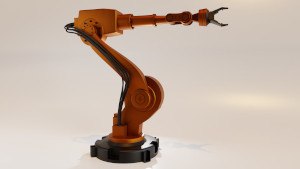Everything You Need to Know About Robotics and How It Is Transforming Sports Training
The introduction of precise robots to athlete training and performance takes sporting practice to the next level. In sports, robots have become essential devices, from movement analysis to rehabilitation. The global robotics market in sports is growing rapidly, valued at $2.1 billion in 2023 and projected to reach $5.6 billion by 2030. However, the question remains: how is robotics changing the training process? So, let us now discuss the techniques, uses, and pros of robotics in sports.
What Is Robotics and Its Role in Modern Training?
Robotics is the field consolidating the design, construction, and application of robots developed to aid or replace human work. An example of this is robotic ball launchers used while training tennis players. Athletes in specific sports need to be proficient and trained on every level, and using launchers that have the ability to vary the speed and the angles of the shots aids players in systematically improving their skills. The usage of robotics, specifically set AI sensors, enables trainers and coaches to receive actionable information derived from in-depth analysis of an athlete's biomechanics. Take the example of the 2022 FIFA World Cup: robotic systems were set to monitor the movements of the players, which then enhanced the training programs designed for each player. In a nutshell, robotics combined with sports allows athletes to not only set new records but also reach their zenith.
Nevertheless, the impact of robotics and advancing technology goes beyond just players. Even the spectators can benefit from cutting-edge innovation through technologies developed to enhance their game-day experience. Just as robotics enhances training, mobile betting apps optimize your sports betting experience by offering cutting-edge services. With the MelBet download APK, you gain access to live monitoring, easy betting interfaces, and better engagement, turning the user experience into a breeze. Why simply tune in to the sports event when you have the power to actively be part of it? Stop waiting and turn every match into a cash-in-your-pocket moment.

Types of Robots Used in Sports Training
Sports and robotics go hand in hand and include an enormous variety of specialized gadgets. The most important among them are:
Ball-Launching Robots: Used to refine shooting for tennis, soccer, and basketball. For example, "RoboToss" delivers the perfect passes for practicing three-point shots in basketball under game-like pressure.
Motion-Capture Robots: Used to record and perfect body movements. In golf, for example, robotic systems can track inefficient swings and, as a result, improve accuracy by 25%.
Training Drones: Take videos from a bird’s-eye view that can be used to improve performance. Rugby teams use drones to analyze and record their different formations to gain a competitive advantage.
Interactive AI Robots: These are used in combat sports like fencing and boxing to train athletes. The level of difficulty is set according to the skill set of the athlete and helps improve their agility and reflexes.
Each type of robot specifically improves certain weak points. For instance, training drones helped an Australian rugby team boost their defensive techniques, which resulted in a 15% decrease in scoring from opponent teams during the season. And this is just one of hundreds of examples, and you can find out more by subscribing to Instagram MelBet. There, you will find the most relevant news from the world of sports, and funny thematic memes will not let you get bored, regardless of your age.
How Robotics Enhances Precision and Performance Analysis
Precision in sports training is transformed with the help of robotics as they provide athletes with constructive criticism that helps fine-tune performance. Performance evaluation is taken to the next level with the use of biomechanical robots, which are rigged with high-speed cameras that offer frame-by-frame analysis of motion. Such advancements have been very useful in track and field as sprinters work with robotic aides to analyze and improve from an inefficient running stride. This aids them in improving their timing during races.
On top of that, robots aid in tracking performance in real-time, too. SmartCourt systems, which are AI-powered and used in tennis, allow players to receive feedback on the shot speed, spin, and placement. Such technology allows strategies to be adjusted on the spot. Studies have shown that athletes who rely on robotic analysis have performance metrics increase by 18% in comparison to those depending on traditional methods.
Wearable Robotics: Exoskeletons for Athlete Assistance
How athletes train and recover is being redefined by wearable robotics. Exoskeletons are used to increase physical capabilities, enabling better performance while reducing fatigue and risk of injury. Here is a brief overview of their applications:
| Exoskeleton Type | Function | Use Case |
|---|---|---|
| Performance Boosters | Increase strength and endurance | Used by weightlifters for safer repetitions |
| Recovery Devices | Assist in rehabilitation after injuries | Common in post-ACL surgery recovery |
| Motion Enhancers | Improve joint mobility for injured athletes | Beneficial for long-term recovery plans |
| Training Aids | Simulate high-intensity scenarios safely | Helps sprinters train for maximum speed |
| Preventative Devices | Reduce strain during repetitive movements | Protects baseball pitchers from overuse |
Robotic exoskeletons were reported to have grossed over $500 million in sales from sports applications alone in 2023, with the adoption rate booming. Professional football players who have used exoskeletons for training have reported up to 12% more explosive power after only two months of utilizing them.
The Role of Robots in Injury Prevention and Rehabilitation
Injury prevention and recovery are areas where robots can really make a difference. Robots operate as biomechanical tools that detect factors that may strain or injure the body based on analyzing stressors during physical activity. Robotic gait analysis systems, for instance, can help prevent potential knee injuries by balancing a runner’s stride.
In rehabilitation, precise and controlled movements and exercises are key, and that is where robotics excels. Robotic arm trainers aid shoulder surgery patients by allowing them to perform movements with precise accuracy, thus speeding up recovery. In 2022, studies showed athletes recovering from surgery were able to regain up to 30% more productivity simply from using robotic rehabilitation.
Real-World Examples of Robotics in Professional Sports
Different types of sports have started to use robotics, and the advantages are profound. A few examples include:
Soccer: RoboGoalie, an artificial intelligence robot, serves as an adaptive goalkeeper that assists players in perfecting their penalty kicks by adjusting their position. It increases player scoring accuracy by 20%.
Tennis: Slinger Bag is a robot that serves balls at tennis players to exercise their reflexes and response time. The services are on par with professional levels.
Basketball: Shooters such as Steph Curry benefit from shot-tracking robots that analyze shooting techniques and learn the mechanics of shooting.
Baseball: Robotic pitchers that can throw curveballs and fastballs assist batters in preparing for real-life situations.
These instances demonstrate how robotics can aid in resolving sport-specific problems. For example, the incorporation of RoboGoalie into German academy football increased penalty conversion rates by 10%.

Challenges and Limitations in Adopting Robotics for Training
Even though robotics can bring a lot of benefits, some challenges exist:
Financial Resource Imbalance: Costly robotic technology might be out of reach for smaller amateur athletes and teams because it can cost millions.
Operation Skills: Advanced robotics are not easy to maintain and run. That is why specialized training is needed.
Too Much Performance Data: Coaches may find it difficult and frustrating to have too many reports because they will not know what areas they can take action on.
Adaptability: Robots might not be able to simulate certain scenarios in sports like football and basketball since these sports involve a lot of unexpected movements.
Despite these few issues, the evolution of modular designs alongside cloud-based analytics is sure to solve the complexity problems and overcaution of users.
Future Trends: Robotics and the Evolution of Sports Training Techniques
The future of sports robotics is phenomenal. With the growing implementation of AI, robots can be programmed to be more sensitive to the needs of each sportsperson. It is a matter of time before autonomous training assistants or even completely immersive AI robotic environments become the norm. By the year 2035, each training package is anticipated to include a robotics element, facilitating performance and advancement like never before. So sit back and allow yourself to accept this brilliant change in technology, as it will allow humanity to go above and beyond what was previously achievable.